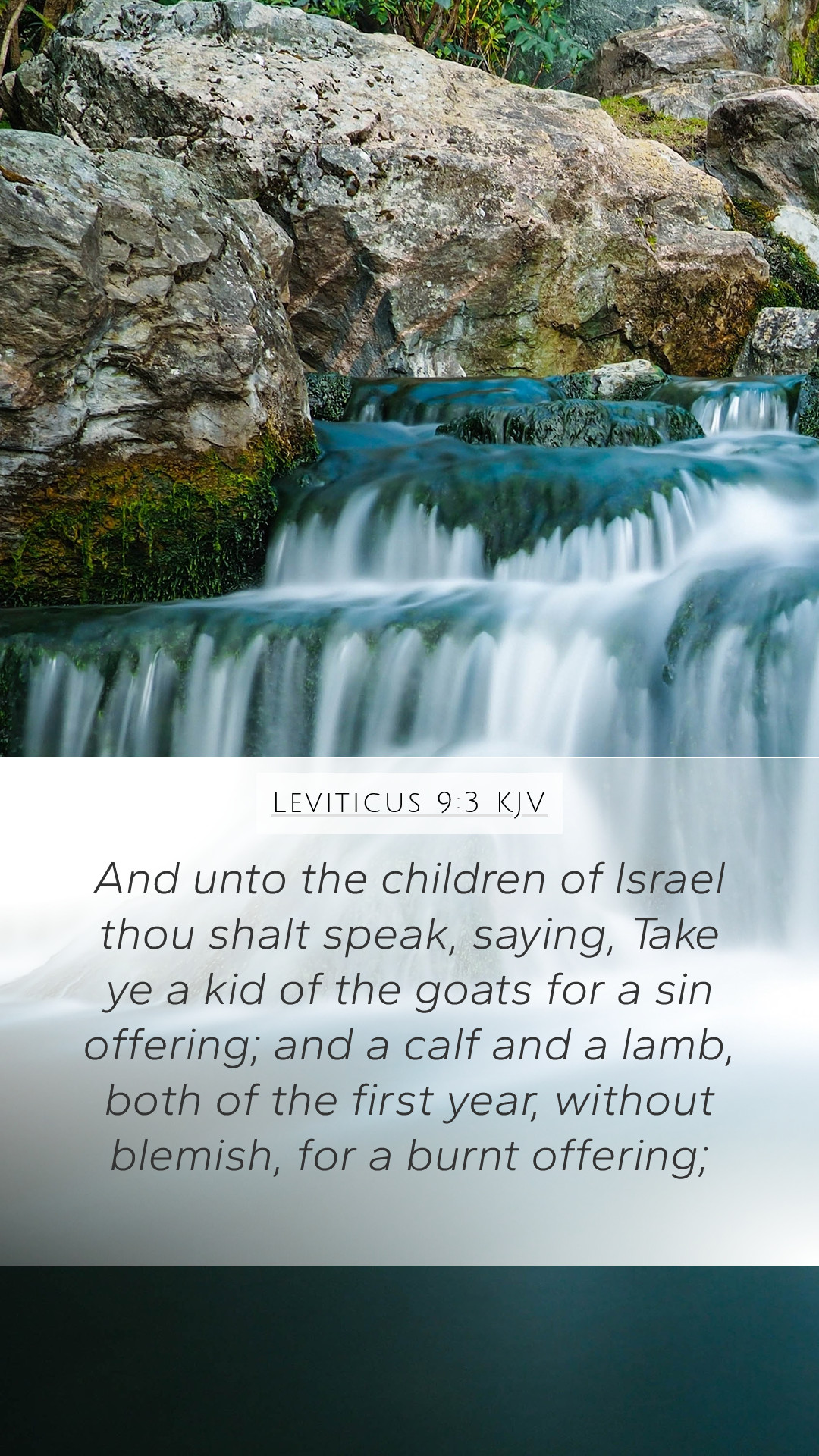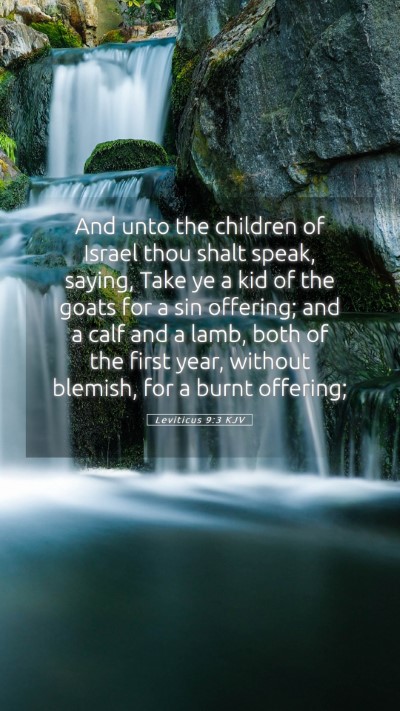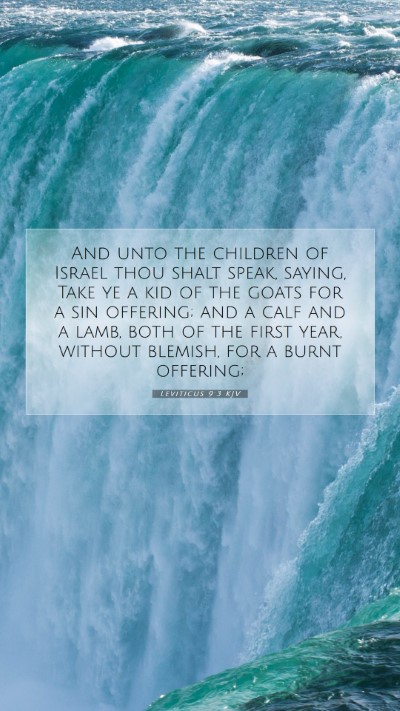Understanding Leviticus 9:3
Bible Verse: Leviticus 9:3 – "And say unto the children of Israel, Take ye a kid of the goats for a sin offering, and a calf and a lamb, both of the first year, without blemish, for a burnt offering."
This verse represents a significant moment in Israel’s worship practices and offerings to God. To understand this passage, we must consider the context, symbolism, and the broader theological implications drawn from it.
Context and Overview
In the book of Leviticus, God provides detailed instructions about offerings and sacrifices, which are a crucial part of the Mosaic Law. Leviticus 9 describes the inaugural sacrifices performed by Aaron and his sons after they were consecrated as priests.
Insights from Commentary
Matthew Henry's Commentary
Matthew Henry emphasizes that this verse illustrates the need for atonement in communion with God. The offering of a goat for sin signifies the acknowledgment of sin and a necessary step towards restoration. Henry also notes that a burnt offering symbolizes total dedication to God, as the entire animal was consumed by fire:
- Sin Offering: Represents the people's need for forgiveness.
- Burnt Offering: Demonstrates the complete surrender and commitment to God.
Albert Barnes' Commentary
Albert Barnes adds that the specification of animals without blemish reinforces the importance of purity and perfection in offerings. This concept corresponds to the ultimate sacrifice of Christ, who is described as the 'Lamb of God.' Barnes highlights the importance of coming before God with the best we have, free from defects:
- Purity of Offerings: A foreshadowing of the perfect sacrifice of Jesus.
- Symbolism of Animals: The goat represents sin, while the lamb signifies innocence.
Adam Clarke's Commentary
Adam Clarke remarks on the communal aspect of the sacrifices; these offerings were made for the whole congregation of Israel. He notes the Hebrew terms used for the offerings and suggests a deeper understanding of community responsibility in worship. Clarke emphasizes that the verse marks the beginning of the sacrificial system, which is central to the Israelite relationship with God:
- Community and Worship: Sacrifices were integral to the community's relationship with God.
- Significance of Rituals: Establishes a pattern of holiness and reverence in worship.
Theological Significance
This verse presents themes crucial for the understanding of sacrifice in the Old Testament. The concept of atonement is woven throughout Scripture, linking to deeper theological truths about sin, forgiveness, and restoration.
Cross References
Leviticus 9:3 can be related to several other Bible verses that share similar themes:
- Exodus 12:5 – The Passover lamb without blemish.
- Hebrews 9:22 – Without shedding of blood is no remission.
- 1 Peter 1:19 – The precious blood of Christ, as of a lamb without blemish.
Application of Leviticus 9:3
Modern readers can draw various lessons from this verse. It prompts reflection on how we present ourselves and our offerings to God. The emphasis on blamelessness calls believers today to consider the quality of their intentions and actions in worship:
- Personal Reflection: What are you offering to God in your life?
- Community Involvement: How can your faith be a benefit to those around you?
Conclusion
The injunction in Leviticus 9:3 highlights the importance of sacrificial offerings in the Old Testament and sets the stage for understanding the ultimate sacrifice represented by Jesus Christ. Through a careful examination of this verse, including insights from various commentaries, readers can gain a richer understanding of Scripture and its application to daily life.


